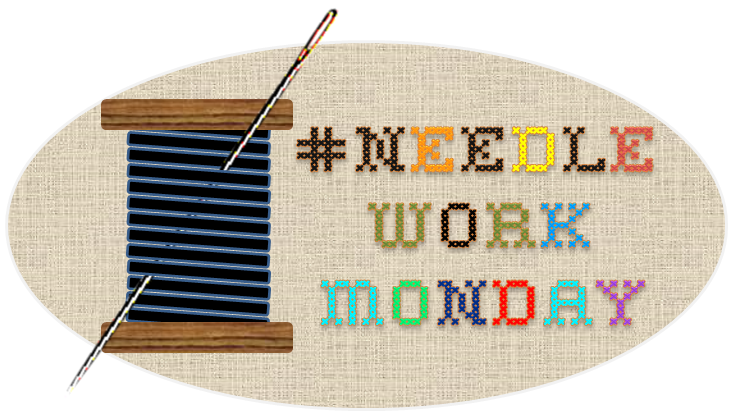How to calculate the price of woven needlework - Part 1

Me encanta tejer, es mi pasión, me gusta aprender diversas técnicas de tejido y experimentar lo que aprendo. En este momento, es de mi preferencia tejer amigurrumis, siento que puedo hacer amigurrumis de calidad, he estado practicando y leyendo al respecto. Y en ese aprender, es necesario establecer precisamente el precio del producto
El año pasado, por esta fecha, una amiga que se encuentra en México me pidió hiciera el regalo de cumpleaños de su mamá, el cual era, dos vestidos tejidos para vestir al Niño Jesús. Ese regalo fue un éxito total, la cumpleañera quedó muy contenta, y todo el que veía el regalo quedaba impactado ante tan delicado y hermoso trabajo.
Ahora bien, hace unos días, la misma amiga, me escribió diciendo que también este año le haga el regalo de cumpleaños a su mamá. Este año el reto es complejo, el regalo debe constar de cuatro amigurrumis, los cuatro amigurrumis deben ser las replicas de cada hijo de la señora, los cuatro hermanos.
¿Cómo calcular el precio de la realización de estos amigurrumis? Este post más que darle una manera adecuada para calcular el precio, es más bien una forma de mostrar lo que considero son los elementos a considerar para calcular el precio de una labor.
I love to knit, it is my passion, I like to learn different knitting techniques and experiment what I learn. At the moment, my preference is to knit amigurrumis, I feel that I can make quality amigurrumis, I have been practicing and reading about it.And in that learning, it is necessary to establish precisely the price of the product.
Last year, around this time, a friend who is in Mexico asked me to make her mother's birthday present, which was two woven dresses to dress the Baby Jesus. That gift was a total success, the birthday girl was very happy, and everyone who saw the gift was impressed by such delicate and beautiful work.
Now, a few days ago, the same friend wrote me saying that this year I should also make a birthday gift for her mother. This year the challenge is complex, the gift must consist of four amigurrumis, the four amigurrumis must be the replicas of each child of the lady, the four brothers.
How to calculate the price of the realization of these amigurrumis? This post rather than giving you a proper way to calculate the price, is rather a way to show what I consider are the elements to consider to calculate the price of a work.

Realizar cuatro amigurrumis con la siguientes características:
- Un amigurrumi de 54 cms
- Un amigurrumi de 52 cms
- Dos amigurrumis de 50 cms
- Dos amigurrumis del sexo femenino y dos amigurrumis del sexo masculino
- Uno de los amigurrumis femeninos lleva lente
- Los amigurrumis femeninos deben lucir con cabello ondulado
- El color de cabello de los amigurrumis masculino es diferente
- Los amigurrumis deben lucir vestidos tal como se visualizan en la foto a cntinuación
A mi juicio el reto del proyecto está en el cabello y lograr una replica lo más exactamente posible de cada hermano.
Este proyecto debe estar listo a más tarar el 15 de noviembre, prácticamente en dos meses.
Otro reto importante de este proyecto es determinar el precio que deberá pagar mi amiga por la realización de estos amigurrumis.
Make four amigurrumis with the following characteristics:
- One amigurrumi of 54 cms
- One amigurrumi of 52 cms
- Two 50 cm amigurrumis
- Two amigurrumis of the female sex and two amigurrumis of the male sex.
- One of the female amigurrumis has a lens.
- The female amigurrumis should have wavy hair.
- The hair color of the male amigurrumis is different
- The amigurrumis should be dressed as shown in the photo below.
In my opinion the challenge of the project is in the hair and getting as exact a replica as possible of each brother.
This project should be ready by November 15 at the latest, practically in two months.
Another important challenge of this project is to determine the price that my friend will have to pay for the realization of these amigurrumis.


En pocas ocasiones he vendido labores tejidas, por lo cual no soy experta en calcular el precio de cuánto debería cobrar. Hace unos años asistía a un club de tejido en una mercería, la dueña de la mercería me comentó que el precio de una labor se obtenía al multiplicar por tres la cantidad de material invertido, sinceramente, este cálculo no me parece adecuado, por ejemplo no se está considerando el tiempo invertido en la realización del producto, existen productos más complejos de realizar y otros menos complejos. Por ejemplo, se puede usar la misma cantidad de hilo en una bufanda que para un trajecito de bebé, el trajecito de bebé tiene más trabajo, al final estaría teniendo un costo igual a la bufanda, lo cual no me parece justo.
Cuando me ha tocado vender he aplicado la regla de multiplicar por tres, aumentando un poco el valor del precio final. Luego, la misma señora que me dijo que multiplicará por tres, me dijo que multiplicará por cinco, tampoco me parecía lo correcto, e inclusive pudiese no ser justo, en un momento para el cliente, y en otro momento, para quien realiza el producto.
A continuación, les comentaré sobre las variables que estaré usando para determinar el precio de una labor.
I have rarely sold knitted needlework, so I am not an expert in calculating the price of how much I should charge. A few years ago I attended a knitting club in a haberdashery, the owner of the haberdashery told me that the price of a work was obtained by multiplying by three the amount of material invested, sincerely, this calculation does not seem adequate to me, for example the time invested in the realization of the product is not being considered, there are products more complex to make and others less complex. For example, you can use the same amount of yarn in a scarf as for a baby suit, the baby suit has more work, in the end it would be having a cost equal to the scarf, which does not seem fair to me.
When it has been my turn to sell I have applied the rule of multiplying by three, increasing a little the value of the final price. Then, the same lady who told me to multiply by three, told me to multiply by five, it didn't seem right to me either, and it might not even be fair, at one moment for the customer, and at another moment, for the one who makes the product.
Next, I will tell you about the variables I will be using to determine the price of a job.

Es importante medir el tiempo de cuánto toma realizar una labor, de tal forma considerar esta variable en la fórmula para calcular el precio de un producto. Llevar un control del tiempo invertido es fundamental, existen aplicaciones que apoyan a esta actividad de cronometrar, sino se puede llevar el control manual, por ejemplo me senté a tejer el 06/04 a las 3:00 p.m a tejer y terminé a las 5:00p.m.; la sumatoria de todos los tiempos invertidos daría el total de horas invertidas en un determinado proyecto.
It is important to measure the time it takes to perform a task, in order to consider this variable in the formula for calculating the price of a product. Keeping track of the time invested is essential, there are applications that support this activity of timing, otherwise you can keep track manually, for example I sat down to knit on 06/04 at 3:00 p.m. to knit and finished at 5:00 p.m.; the sum of all the times invested would give the total hours invested in a given project.

Por otro lado, es requerido saber cuánto se quiere ganar mensual realizando labores tejidas, para luego sacar el costo por día. Por ejemplo, si se desea ganar 500 dólares mensuales, por lo cual si divido 500/30=16.6, aplicando redondeo, el día de trabajo tendría un costo de 17 dólares.
Ahora bien, si se quiere saber cuánto es el costo de la hora, partiendo de que se tiene una jornada de 8 horas, se divide 17/8=2.1; la hora tiene un costo de 2 dólares.
On the other hand, it is required to know how much you want to earn per month doing knitted works, in order to get the cost per day. For example, if you want to earn 500 dollars a month, so if I divide 500/30=16.6, rounding up, my working day would cost 17 dollars.
Now, if you want to know how much is the cost per hour, assuming that you have an 8-hour workday, divide 17/8=2.1; the hour has a cost of 2 dollars.

Luego de haber culminado la labor, pesar en una balanza la labor, esto con el fin de conocer cuánto hilo fue usado para completar el tejido, por lo cual si la labor pesa 62 gramos, y se había comprado una lana de 100 gramos a un costo de 26 dólares, con una simple regla de tres se podrá conocer cuánto es el costo de la lana utilizada.
Para el ejemplo, 62*26/100= 16.12, lo que significa, que en la labor tejida se gastaron aproximadamente 16 dólares en hilo.
After having completed the work, weigh the work on a scale, this in order to know how much yarn was used to complete the fabric, so if the work weighs 62 grams, and had bought a wool of 100 grams at a cost of $ 26, with a simple rule of three you can know how much is the cost of the wool used.
For the example, 62*26/100= 16.12, which means that approximately 16 dollars in yarn were spent on the woven work.

Existen gastos a considerar en el precio, por ejemplo si el producto será metido en una caja o bolsa, ese costo del empaque deberá ir incluido en el cálculo del precio. También si se requiere, sumar el precio del gasto en luz, depreciación del computador, mobiliarios, entre otros.
There are expenses to consider in the price, for example if the product will be packed in a box or bag, the cost of packaging should be included in the price calculation. Also, if required, add the cost of electricity, depreciation of the computer, furniture, among others.

Luego de haber identificado todas las variables se puede establecer una fórmula para calcular el precio.
Precio= Total gastos en materiales + (Total horas de trabajo*costo hora) + 25 % porcentaje de ganancia + gastos fijos
Nota: El porcentaje de ganancia lo coloca cada quien a su criterio, es realmente la ganancia que se va a obtener de la venta del producto.
After having identified all the variables, a formula for calculating the price can be established.
Price= Total material expenses + (Total working hours*hourly cost) + 25% profit percentage + fixed expenses.
Note: The percentage of profit is set by each person at their own discretion, it is really the profit that will be obtained from the sale of the product.

Tengo la tarea de realizar el análisis del costo de cada muñeco con las variables que le he mostrado hoy, luego realizar la sumatoria total para comentarle a mi amiga cuánto saldrá el total de su pedido.
Para los materiales es mucho lo que debo analizar por cada muñeco, por ejemplo, hilo para el cabello, hilo para el cuerpo, hilo para la ropa, relleno, ojos, accesorios.
Para el tiempo usaré la referencia que tengo de haber realizado muñecos.
Así, que para la semana que viene les compartiré el ejercicio práctico para calcular el precio.
Agradezco cualquier comentario que puedan hacer sobre calcular el precio.
I have the task of analyzing the cost of each doll with the variables that I have shown you today, then make the total sum to tell my friend how much will be the total of her order.
For the materials I have to analyze a lot for each doll, for example, thread for the hair, thread for the body, thread for the clothes, stuffing, eyes, accessories.
For the time I will use the reference I have from having made dolls.
So, for next week I will share with you the practical exercise to calculate the price.
I welcome any comments you can make about calculating the price.
Gracias por dedicar un espacio de su tiempo para leer la publicación. Si hay alguna pregunta, por favor pregúntame en la sección de comentarios a continuación.
Thank you for taking the time to read this publication. If there are any questions, please ask me in the comments section below.
Texto e imágenes: Por @jicrochet
Text and images: By @jicrochet

Great article, @jicrochet 👍I also knit items not for sale. I don't know how much can I charge for others when I sell a piece. It is important to consider "the time invested in the realization of the product" as you wrote. I didn't know how to set the hourly wage for knitting but the way you explained above starting from how much I want to earn per month might be one option ☺️
Hello,
Thanks for visiting me and stopping by to comment. Yes, this price thing is good to know to be fair to customers and to ourselves as knitters when selling.
Good that my content will be able to help you.
Regards
Congratulations @jicrochet! You have completed the following achievement on the Hive blockchain and have been rewarded with new badge(s) :
Your next target is to reach 2750 replies.
You can view your badges on your board and compare yourself to others in the Ranking
If you no longer want to receive notifications, reply to this comment with the word
STOPCheck out the last post from @hivebuzz:
Thanks for the support
You're welcome @jicrochet
Support us back and vote for our witness.
You will get one more badge and bigger upvotes from us when we notify you.
¡Hola!. Justo este tema es uno de los más complicados, sobre todo cuando recién se está iniciando en el tejido. Está muy bien explicado, a eso sumarle el precio del patrón (si fuese de pago).
Si hay algo que aprendí en este rubro del tejido es no hacer rebajas. Por más que sean varios amigurumis porque no somos una máquina donde a mayor cantidad (producción) se reducen los costos. Espero poco a poco los clientes entiendan eso. Aún nos queda una enorme labor en el mundo de la artesanía. ¡Buenas vibras!.
Hola,
Gracias por tu comentario, de hecho lo esperaba. Es rudo lidiar el tema de los costos con los clientes. Realizar estos cuatro muñecos personalizados generan un trabajo importante, veamos qué dicen cuando les de el precio.
Saludos
How to price one owns knitted (or sewed, crochet embroidery etc.) creations is a difficult but important question and it is interesting to read how you go on in pondering this topic. Here (Germany) people often say it is impossible to get an hourly wage in crafting as the product is then much too expensive compared to industrial produced items… so in Germany we often find women selling their hand knitted socks for super cheap prices (handmade socks are sold for roughly 12-15 €, and I estimate the wool alone costs 8 € and the official minimal wage for an hour is 9,60 € which they absolutely do not get with selling socks… ). I think it can be helpful to research which kind of customer one has (or want to attract) and then calculate the cost and wage like you did and look what other people charge who make a good living with this (not the women who sell their socks for near to nothing).
But I still have no real answer to the pricing questions… But very important you wrote about this @jicrochet <3
Huhu @marblely and @crocheille could this be a community topic? A new „contest“ for brainstorming how to best sell ones creations, or a series of experience exchange how selling craft is done by different members (best practice or which mistakes to avoid)…?
Yes, it is definitely a complex issue, but we must seek a balance where the artisan benefits. I believe that those of us who sell are responsible for valuing manual work.
I think it is excellent that we can deliberate on this issue and establish more criteria in this regard.
Thank you for appreciating my content.
I hope you are very well
Best regards.